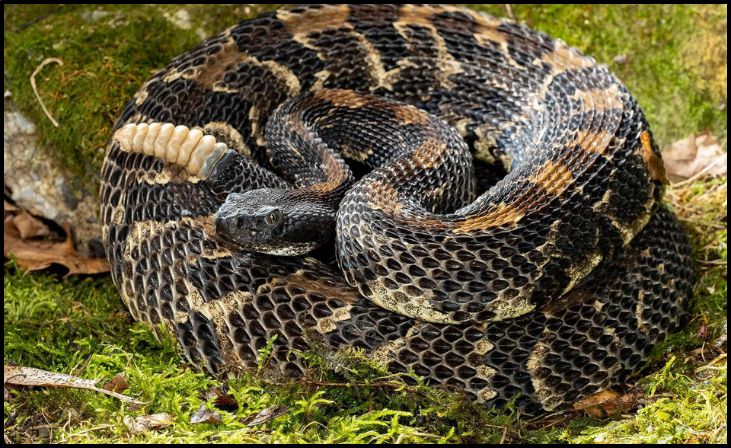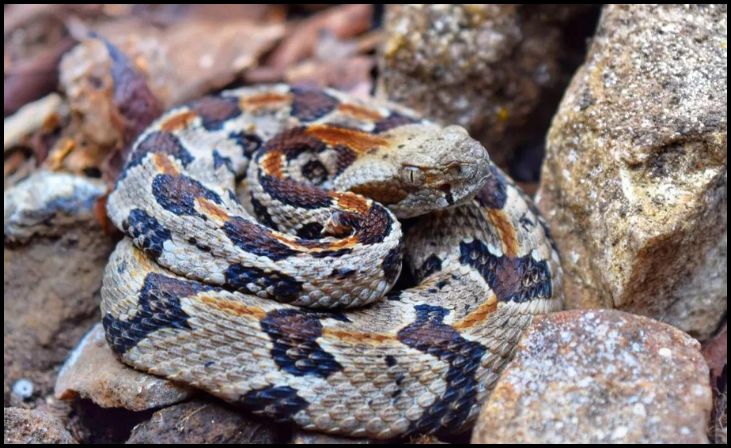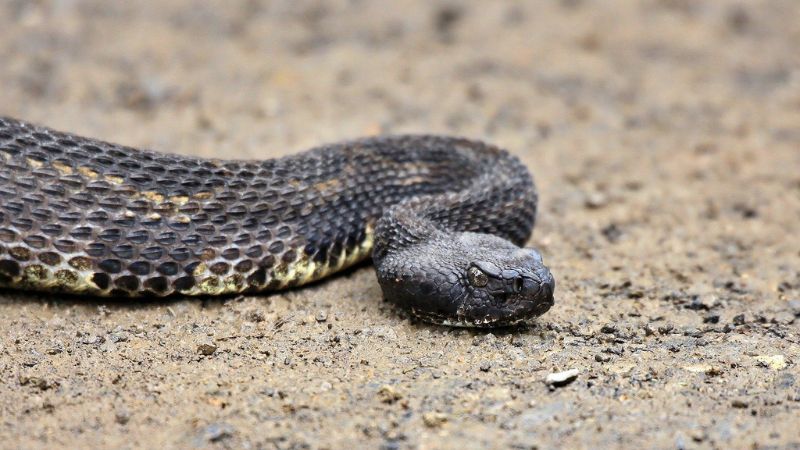Timber rattlesnakes, known scientifically as Crotalus horridus, are one of the most fascinating and feared snakes in North America. They inhabit a range of environments, from the forests of the northeastern United States to the rugged mountains of the Southeast. Known for their distinctive rattling tail, these snakes play a crucial role in controlling rodent populations, making them an essential part of their ecosystems. Despite their fearsome reputation, timber rattlesnakes are generally reclusive and avoid human contact whenever possible.
Physical Characteristics of Timber Rattlesnakes

Timber rattlesnakes are known for their robust bodies, distinctive color patterns, and the iconic rattle at the end of their tails. Typically, these snakes range from 3 to 5 feet in length, although they can grow larger. Their coloration varies from yellow to brown, often with dark crossbands. These color patterns provide excellent camouflage in their natural habitats, helping them to ambush prey. The rattle, made of keratin segments, is used as a warning device to deter potential threats. As they grow, timber rattlesnakes shed their skin periodically, adding new segments to their rattle each time.
Historical Records of Large Timber Rattlesnakes
Over the years, numerous reports and anecdotal accounts have emerged about exceptionally large timber rattlesnakes. Historically, these stories often include snakes that exceed the average length, sometimes significantly. However, verifying these claims can be challenging due to the lack of physical evidence or reliable documentation. Despite this, there have been a few well-documented cases of unusually large timber rattlesnakes that have captured the attention of herpetologists and the general public alike. These records highlight the potential for these snakes to reach impressive sizes under the right conditions.
The Largest Timber Rattlesnake on Record
The largest timber rattlesnake ever recorded was an astonishing 6 feet, 2 inches long. This remarkable specimen was discovered in the state of Kansas, a region known for producing some of the largest examples of this species. The snake’s girth and length were exceptional, making it a subject of significant interest in herpetological circles. This particular timber rattlesnake not only set a record for its length but also underscored the potential for these snakes to reach sizes well beyond the average. Such a discovery provides valuable insights into the growth potential and biological limits of this species.
Factors Contributing to Large Size
Several factors can contribute to the unusually large size of timber rattlesnakes. Genetics play a crucial role, as some individuals may inherit traits that predispose them to grow larger. Additionally, the availability of abundant prey in a snake’s habitat can support greater growth. Environmental conditions, such as a favorable climate and suitable shelter, also contribute to the potential for larger sizes. Furthermore, the snake’s age is a significant factor; older snakes have had more time to grow, often resulting in larger specimens. Understanding these factors helps herpetologists to better comprehend the growth dynamics of timber rattlesnakes.
Implications of Large Timber Rattlesnakes

The existence of exceptionally large timber rattlesnakes has several implications for their ecology and interaction with humans. Larger snakes can prey on a wider variety of animals, potentially impacting local ecosystems. Additionally, these snakes may be more intimidating to people, leading to increased human-wildlife conflicts. However, it is essential to remember that timber rattlesnakes play a crucial role in their environments, and their presence, regardless of size, is a sign of a healthy ecosystem. Efforts to conserve these snakes and their habitats are vital to maintaining ecological balance.
Conservation and Protection
Timber rattlesnakes face numerous threats, including habitat destruction, road mortality, and persecution by humans. Conservation efforts are essential to protect these important reptiles. In many areas, timber rattlesnakes are protected by law, and various organizations are working to preserve their habitats and educate the public about their ecological importance. Research and monitoring programs aim to track population trends and understand the impacts of environmental changes on these snakes. By promoting coexistence and reducing human-wildlife conflicts, conservation initiatives can help ensure the survival of timber rattlesnakes for future generations.
Conclusion
The largest timber rattlesnake ever recorded serves as a reminder of the remarkable diversity and adaptability of these reptiles. These snakes, often misunderstood and feared, play a vital role in their ecosystems. Understanding the factors that contribute to their growth and the challenges they face is crucial for their conservation. As we continue to study and protect timber rattlesnakes, we gain valuable insights into the complex dynamics of our natural world, fostering a greater appreciation for the wildlife that shares our planet.


